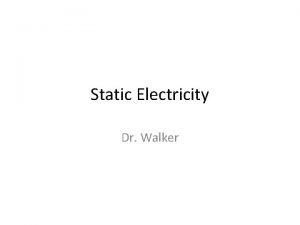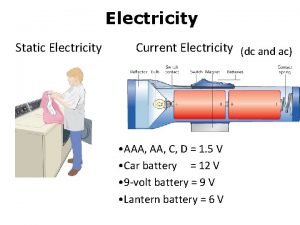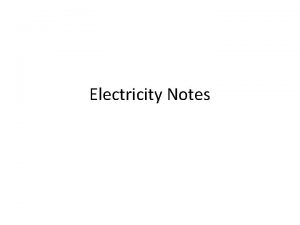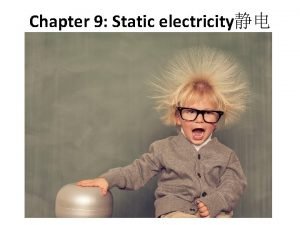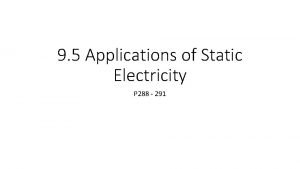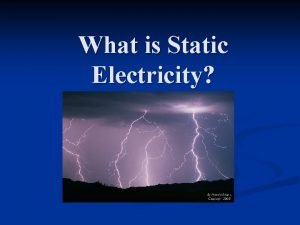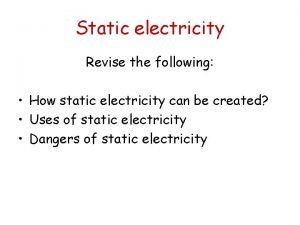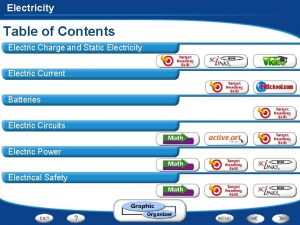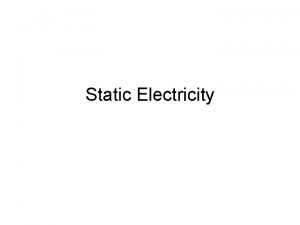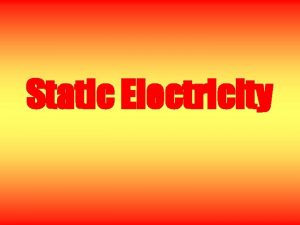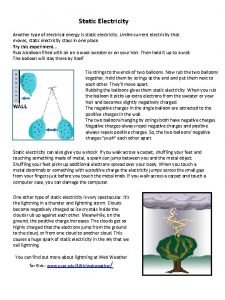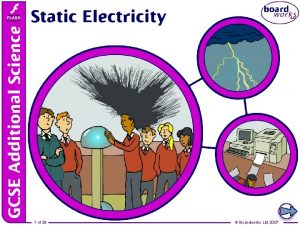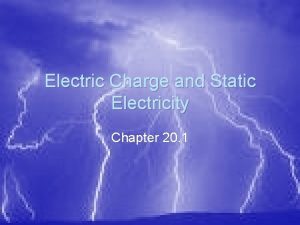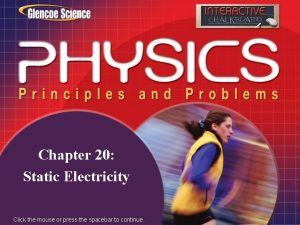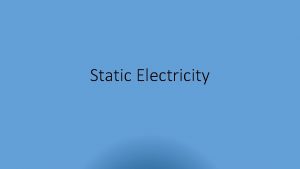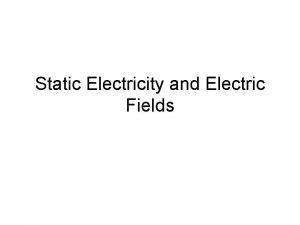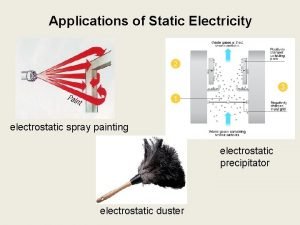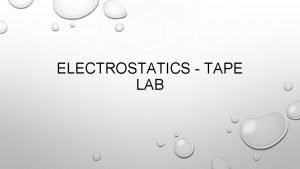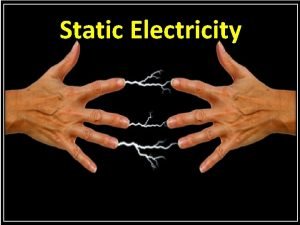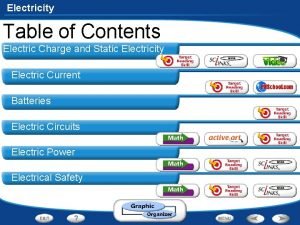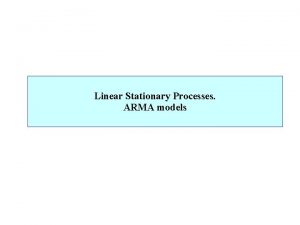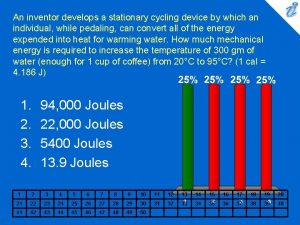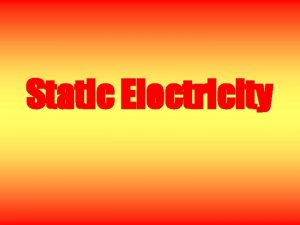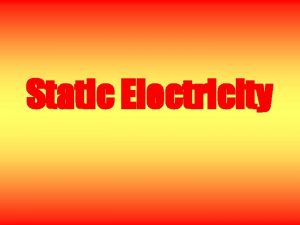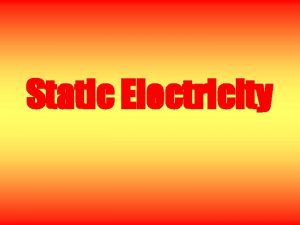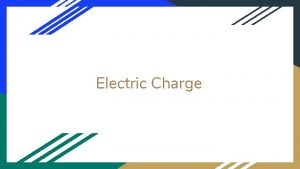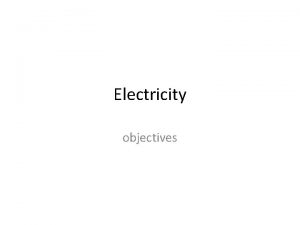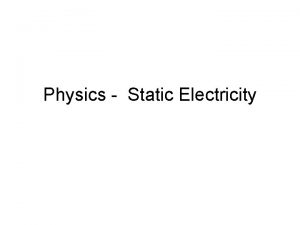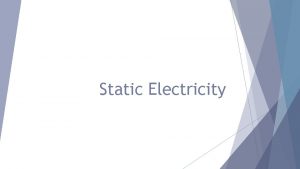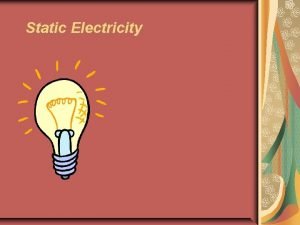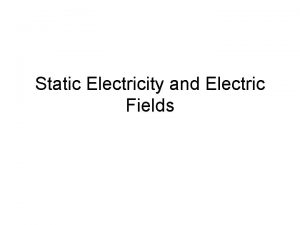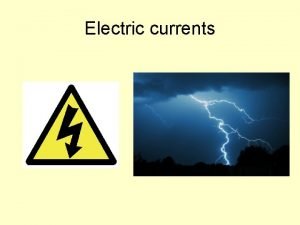Static Electricity What Is Static Electricity A stationary
































- Slides: 32

Static Electricity

What Is Static Electricity? • A stationary electrical charge that is built up on the surface of a material

Where do charges come from? Matter is made up of atoms. + – neutron (neutral) + + – Proton (positive charge) + – atom – electron (negative charge) nucleus

Where do charges come from? If electrons = protons neutral If electrons > protons gaining electrons, negative charge If electrons < protons losing electrons, positive charge

Law of Electric Charges • The law of electric charges states that like charges repel, and opposite charges attract. • Protons are positively charged and electrons are negatively charged, so they are attracted to each other. • Without this attraction, electrons would not be held in atoms.

Electro-negativity +++++ +++ ++ + Relative electro-negativity ranking for some common materials from electron donating materials (+, glass) to -electron accepting --materials (-, teflon) ---- • • • Glass Human Hair Nylon Silk Fur Aluminum Paper Cotton Copper Rubber PVC Teflon

Electric Force The force between the charged objects is an electric force. The size of the electric force depends on 2 things: 1. 2. The amount of charge (the greater the charge, the greater the force) The distance between charges (the further the distance, the less the force)

Insulators and conductors Insulators: materials that do NOT allow electrons to flow through them easily. Insulators can be easily charged by friction as the extra electrons gained CANNOT easily escape.

Insulators and conductors • Conductors: materials that allow electrons to flow through them easily. Conductors CANNOT be easily charged by friction as the extra electrons gained can easily escape.

How Can You Charge Objects? There are 3 ways objects can be charged: 1. Friction 2. Induction 3. Conduction

Where do charges come from? Rubbing materials does NOT create electric charges. It just transfers electrons from one material to the other.

Where do charges come from? When a balloon rubs a piece of wool. . . – – – wool + + + electrons are pulled from the wool to the balloon. The balloon has more electrons than usual. The balloon: – charged, The wool: +charged

Two kinds of charges • After being rubbed, a plastic ruler can attract paper scraps. Ruler carries electric charge. It exerts electric force on paper. This charging method is called charging by friction. The interaction between static electric charges is called electrostatics.

Induction: The production of a charge in an uncharged body by bringing a charged object close to it When negatively charged rod is put near a metal can. . . - - - induced charges attraction top of the can: positive buttom of the can: negative ++ + + metal can electrons of the can are pushed away from the rod. - - + - repulsion & attraction > repulsion

Attraction of uncharged objects Similarly, when charged rod is close to paper scrap. . . - - - - attraction between the attraction rod and + charge > repulsion between the rod and - charge. ––– – ++ + + paper molecules of paper align. repulsion

Conduction • Charging by conduction happens when electrons move from one object to another through direct contact (touching). Ex. Suppose you touch an uncharged piece of metal with a positively charged glass rod. Electrons from the metal will move to the glass rod. The metal loses electrons and becomes positively charged.


Static Discharge Human body can not feel less than 2, 000 volts of static discharge Static charge built up by scuffing shoes on a carpet can exceed 20, 000 volts?


Grounding What is grounding? An object is grounded when it is connected to the earth through a connecting wire. If a charged conductor is grounded, it will become neutral.

Grounding b How does grounding occur? + + + When we touch a metal ball of positive charge. . . – electrons flow from the earth to the metal ball to neutralize the metal ball. Metal ball becomes neutral.

Grounding How does grounding occur? – – – Similarly, if the metal ball is of negative charge. . . – extra electrons flow from the metal ball to the earth and the ball becomes neutral.

Lightning • kills more than 60 people and • injures more than 400 people a year in the US • one mile every five seconds • about 20, 000 C • Voltage of up to 1. 2 x 108 volts •


How Lightning Forms







 Static electricity and current electricity
Static electricity and current electricity Current electricity gif
Current electricity gif Magnetism vocabulary
Magnetism vocabulary Static electricity
Static electricity Ampere unit
Ampere unit Conduction vs induction
Conduction vs induction Static electricity
Static electricity Static electricity painting
Static electricity painting Is cotton negatively charged
Is cotton negatively charged Static electricity in photocopiers
Static electricity in photocopiers Static electricity
Static electricity Difference between charge and electric charge
Difference between charge and electric charge The law of charges
The law of charges Static electricity
Static electricity Static electricity.
Static electricity. Static electricity one cloud to another
Static electricity one cloud to another Bill nye series and parallel circuits
Bill nye series and parallel circuits Static electricity summary
Static electricity summary Static electricity by calamityofcolors
Static electricity by calamityofcolors Static electricity chapter 20 answers
Static electricity chapter 20 answers Static electricity
Static electricity Static electricity examples
Static electricity examples What is that
What is that Who discovered electricity
Who discovered electricity Does magnetic field exerts force on a static charge
Does magnetic field exerts force on a static charge Venn diagram of series and parallel circuit
Venn diagram of series and parallel circuit Static electricity painting
Static electricity painting Electrostatics sticky tape lab answers
Electrostatics sticky tape lab answers Electricity flow
Electricity flow Graphic organizer 1 electric current
Graphic organizer 1 electric current Hauled container system and stationary container system
Hauled container system and stationary container system Arma
Arma An inventor develops a stationary cycling device
An inventor develops a stationary cycling device



